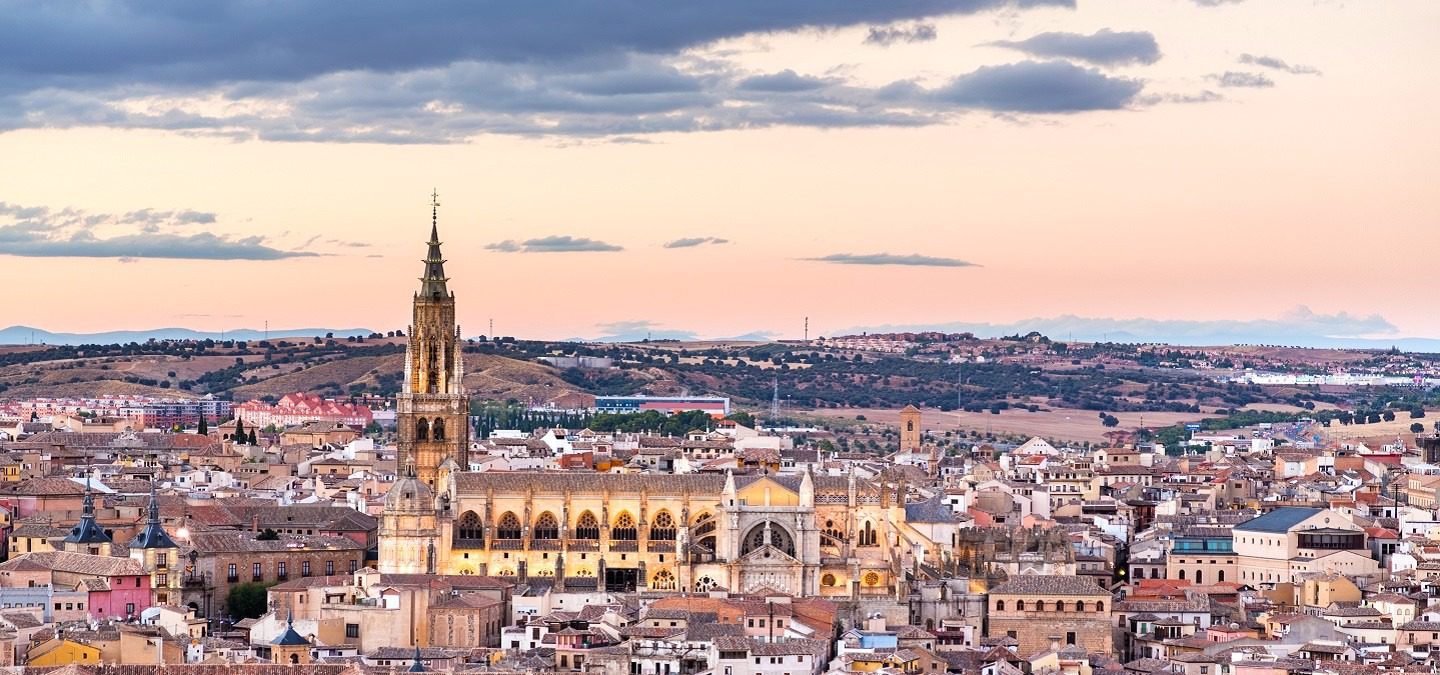
Toledo: The City of Three Cultures.
Toledo’s history is marked for having been a hot bed of culture during the period of Convivencia, or coexistence, on the Iberian peninsula in the Middle Ages. The three cultures that existed in Toledo during this time were based on the Abrahamic religions: Judaism, Christianity, and Islam. Its rich history of being a melting pot of culture led to the establishment of several institutions such as the Toledo School of Translators.
Most works at the school were translated from Arabic to Latin but other works were translated from Hebrew and Greek. One of the most famous translators was Gerard of Cremona. He translated classical works that only previously existed in Arabic and Greek. Some of his most famous translations include Ptolemy’s Almagest, a book on astronomy; Euclid’s works on geometry; Archimedes’ mathematical works; and several of Aristotle’s works on science and philosophy.
Another famous site in Toledo is the Synagogue Santa María la Blanca. A Jewish temple that is known for its distinct Muslim architecture having been built circa 1180 during the Islamic rule of the Iberian peninsula. Although the Santa María la Blanca has Muslim influences the style is officially known as Mugéjar, a mixture of Greco-Roman, Gothic, and Islamic architecture. The Greco-Roman influence that are exhibited are the Corinthian capitals and arches.
The Mosque of Christo de la Luz is another building in Toledo that exhibits a cross between cultures. Originally built as a mosque it was converted to a Church during the Reconquista of Spain. The outside of the building has a mixture of Roman and Gothic influences left over from when the Umayyad Muslims conquered Iberia from the Visigoths. The structure also has heavy Islamic influences with the repeating arches and vaults in the three naves and Arabic calligraphy in the interior.
The Church of San Sebastián is another building with a mixture of Christian and Islamic influences. It was originally built as a mosque and like the Christo de la Luz was converted to a church when Toledo was conquered during the Reconquista.
The Cathedral of Saint Mary of Toledo was rebuilt in 1227 by Archbishop Rodrigo Jiménez de Rada. He tore down the Mosque that had previously been on the location of a Visigoth church that had been torn down by the Muslims during their conquest. He undoubtedly had the mosque torn down to help rid Toledo of its Islamic past. The cathedral is built entirely in the Gothic style but the presence of the old Mosque had an influence on the cathedral’s construction. The cathedral was built wider than it normally would have to match the mosque’s footprint. The choir of the cathedral was also placed in the center of the nave instead of the eastern end as they were normally placed in French Gothic cathedrals because of the different orientation of Mosques.
Toledo would be a great city to visit for anyone interested in history, architecture, or religion because of the city’s diversity and intercultural influences.
Sources
Corrigan, Dr. Nicole. “Spanish Gothic Cathedrals, an Introduction.” Smart History. Accessed November 19, 2023. https://smarthistory.org/spanish-gothic-cathedrals/.
“Gerard of Cremona.” Encyclopædia Britannica. Accessed November 18, 2023. https://www.britannica.com/biography/Gerard-of-Cremona.
“Mosque of Christo de La Luz.” Museum with No Frontiers. Accessed November 18, 2023. https://islamicart.museumwnf.org/database_item.php?id=monument%3BISL%3Bes%3BMon01%3B3%3Ben.
Reilly, Dr. Diane. “Medieval Synagogues in Toledo, Spain.” Smart History. Accessed November 18, 2023. https://smarthistory.org/synagogues-toledo-spain/.
“Visit San Sebastin Church: TCLM.” Turismo Castilla la Mancha. Accessed November 19, 2023. http://en.www.turismocastillalamancha.es/patrimonio/iglesia-de-san-sebastian-7164/descripcion/.
